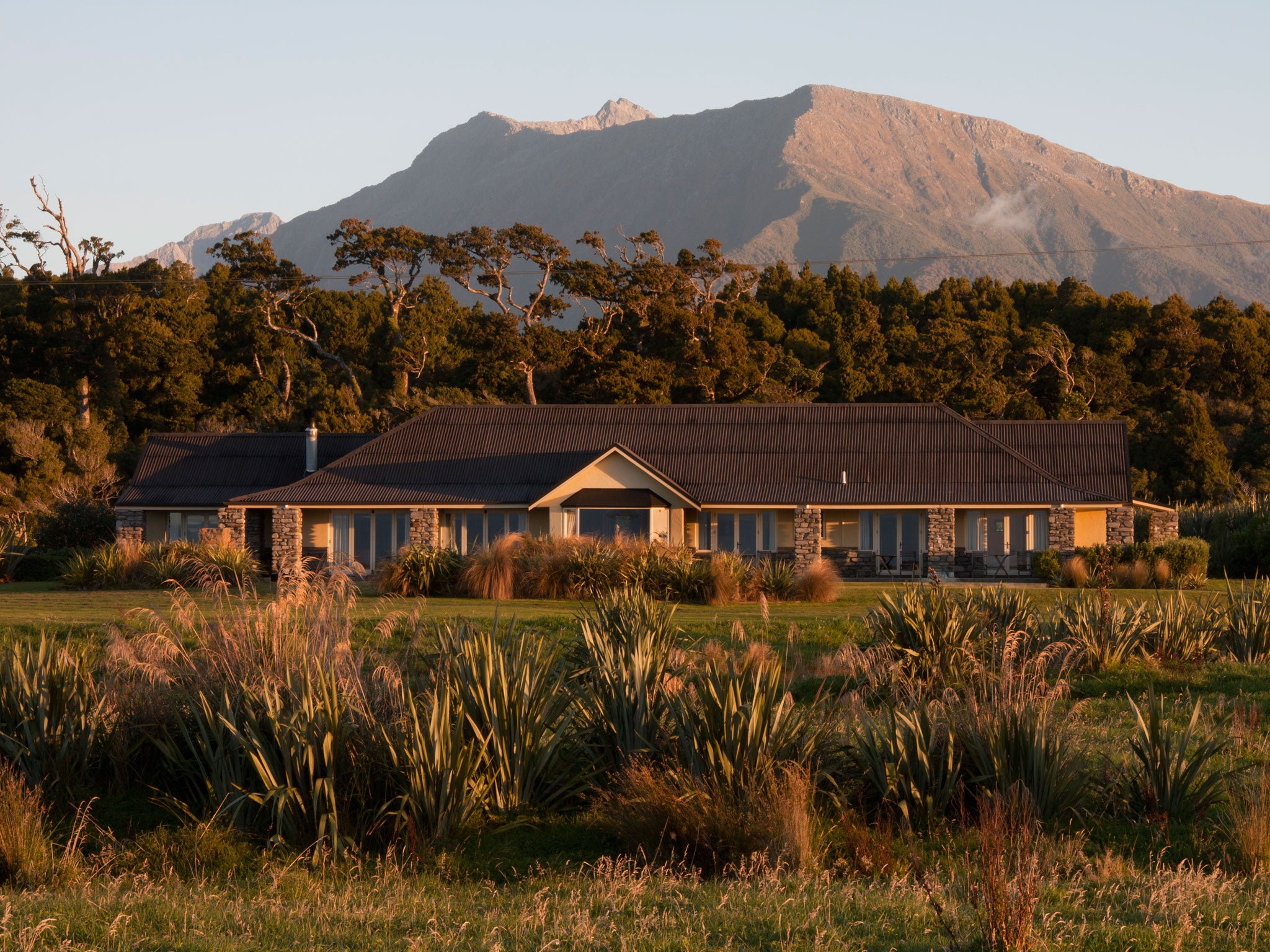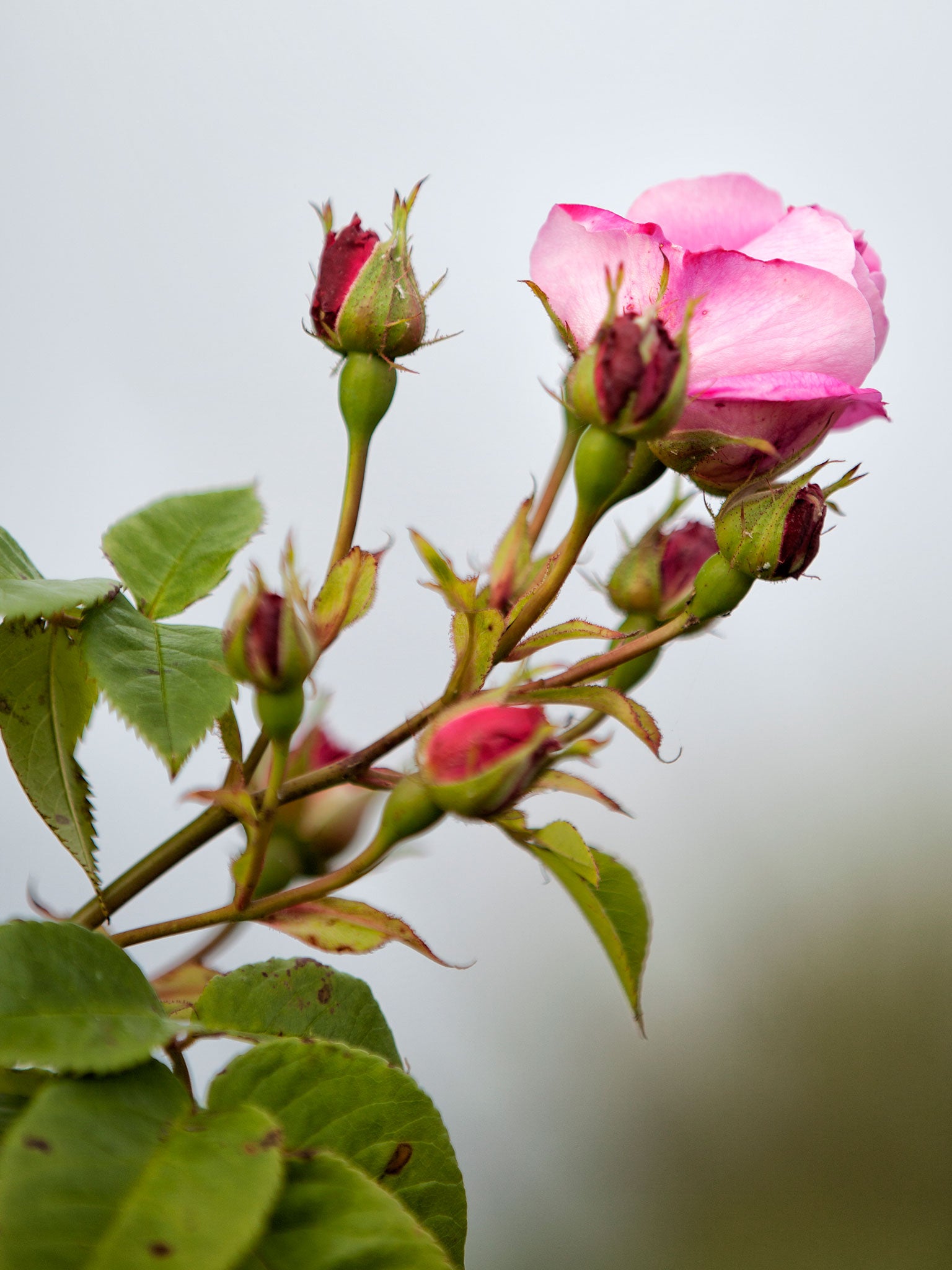Anna Pavord: ‘In a remote corner of New Zealand, a Nolan rose from the very first settlement in Jackson Bay'
From a cottage in Ireland, Mrs Nolan's great-grandmother had taken this slip of a rose halfway round the world and, in appalling circumstances, had persuaded it to grow

We spent most of November in New Zealand. It's a good month to escape the UK, if it's possible, and I had been invited to give a couple of talks at a festival in Blenheim. When that was over we drifted slowly across to the west coast of the South Island and made our way down from Westport through Punakaiki and Franz Josef, fetching up finally at Haast.
"Why on earth are you going to Haast?" said locals, further up the coast. "There's nothing there but sandflies and Nolans." There are only about a million people in the whole of the South Island and it's true that by the time you get down to Haast, a large proportion of them will be members of the Nolan family.
Down here, the coast road (the only road) veers sharply inland to much-hyped Wanaka, 140km away, but I wasn't ready for commotion. I was well tuned to emptiness. You are at exactly the right pitch to appreciate the bleached out parallels of the estuary, where the Okuru river hurls its snowmelt down to the sea. You expect nothing more than the saloon and the petrol station that make up what there is of the Haast township.
Just outside Haast, in the silence of emptiness, there's a B&B called Collyer House, that crouches low against the wind, with sand silting up against the clumps of grasses by the entrance. I'm not exactly talking it up – I'm aware of that – but I loved Collyer House (collyerhouse.co.nz). It's owned by Neroli Nolan, the fourth generation of her family to hang on in Haast, and she cooked the best breakfasts we ate in the whole of three weeks in New Zealand.
She was practical, robust, self- reliant, humorous, and, if you asked, told extraordinary stories about the first Nolans to arrive in these parts – her great-grandparents. They were among a shipload of migrants who in 1875 came into Jackson Bay just south of Haast, as part of a settlement scheme funded by the government.

It was a disaster. Plans for the township had evidently been made by someone who knew nothing of the terrain, for they'd laid it out on a swamp. There were plenty of fish to be caught and plenty of timber to be felled and milled. But there was no jetty or wharf, where a ship could unload a cargo. There was no road either. The area remained cut off until the Haast Pass Highway was opened in 1966. Up till that time, the only route in or out was by way of a track through the mountains. We walked some lengths of it. It is tricky.
The Nolans were among the few of the original settlers who survived. Though they started as subsistence farmers, they gradually acquired more land and built up big flocks of sheep on pasture cleared from forests of kahikatea and rata. Wherever you see old photographs in these parts – on the walls of the Hard Antler pub, or in the bar of the Haast motel – you'll be looking at Nolans.
Here is Sidney Nolan standing on a cart loaded with barrels of whitebait, driving a team of five horses through a river in wild flood. Here is William Nolan, towing his horse behind a boat that he's rowing across another swollen river. All the early pictures show them wearing the same kind of clothes: mismatched bits of three-piece suits, always with waistcoats (undone) and always with hats. Kevin Nolan, setting off (hatless) on horseback for a cattle sale.
Mrs Nolan had an amazing series of washing lines, which worked on a system of pulleys and pulled the washing way up into the sky where it streamed out like the banners of a medieval battlefield. I was pegging out the evidence of a very muddy day walking the Smoothwater Bay track when she called me over to look at a rose. It was growing against a bit of trellis she'd put up to defend it from the wind, a shrubby sort of rose, with deep pink flowers, whose scent you could scarcely catch before it was snatched away on the gale.
That rose, she said, had come down through the Nolan family from the very first settlement in Jackson Bay. Not the original bush of course, but cuttings of it, cuttings rooted and passed on, cuttings that in their very survival kept alive the link with the home that had been left behind. From a cottage in Ireland, Mrs Nolan's great-grandmother had taken this slip of a rose halfway round the world and, in appalling circumstances, had persuaded it to grow.
That evening, when we returned from a whitebait supper, we found sprigs of the rose in a vase by our bed.
Join our commenting forum
Join thought-provoking conversations, follow other Independent readers and see their replies
Comments